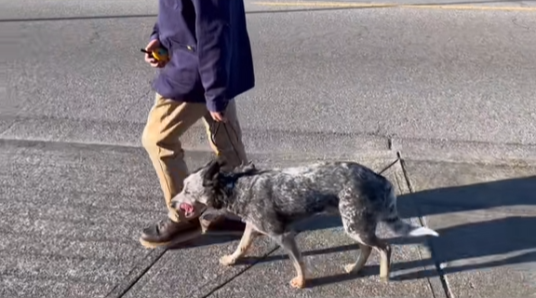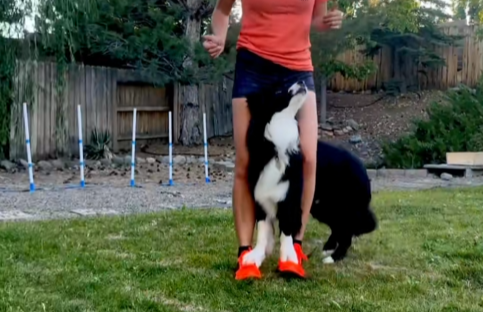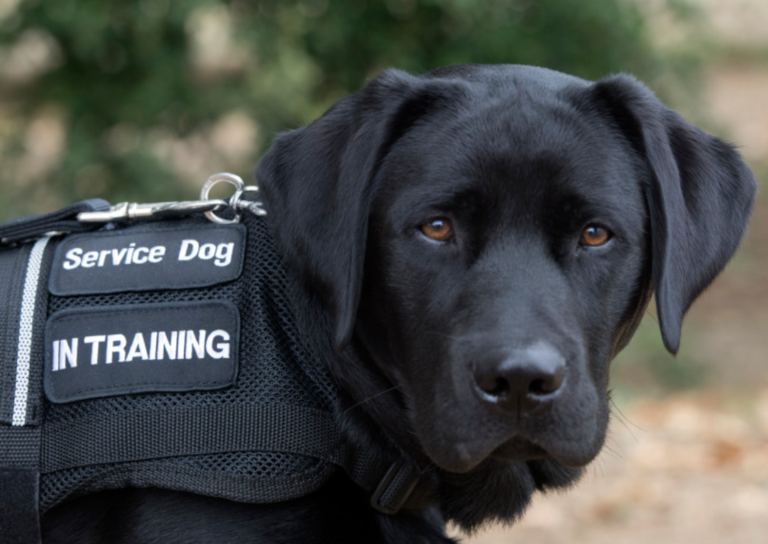

Understanding Dog Body Language: 5 Cues Every Pet Parent in Lehigh Valley Should Know
If you’re looking for a clear, nuanced way to learn how to read dog body language, you’ve come to the right place. In this guide, we’ll break down the top five dog body language cues every pet parent should know—with a focus on real-life behavior signs, dog stress signals, and how to spot signs your dog is uncomfortable before a situation escalates.
As a dog trainer in the Lehigh Valley, I’ve worked with families in Allentown, Bethlehem, and Easton who were shocked to discover their dog wasn’t calm at all—just shut down.
Let’s fix that, together.
Cue #1: The Straight-Down Tail
This is one of the most misunderstood dog behavior signs, especially at busy parks or community events.
Dogs with tails hanging straight down (not tucked tight under the belly, and not naturally curled tails) are often showing one of three things:
- Anxiety or Discomfort
Most common in overstimulating environments like parades, dog parks, or hardware stores. These dog stress signals are often missed because a still dog can look “well-behaved.” ✅ Real-life Lehigh Valley example: Dogs walking at Allentown Fairgrounds during the annual Pet Expo during busy hours often show a straight-down tail while freezing or scanning their environment. - Focused During Work or Play
You’ll often see this in high-drive working breeds during bite work or tug games. Their tail drops as they anchor into the task. - Low Energy, Low Motivation
Some dogs just… aren’t in a rush. If your pup has always preferred a leisurely stroll around Bethlehem’s Monocacy Park, you may have a naturally low-energy dog whose tail simply rests low.
Cue #2: Loose vs Tense Muscles
Understanding dog body posture is essential. One dog with a down tail might be relaxed—another could be near a meltdown.
Let’s look at two dogs:
- A Blue Heeler walking stiffly at heel
- A Border Collie standing between their owner’s legs
They both have low tails… but they’re worlds apart emotionally.
The Border Collie shows:
- Loose, floppy tongue
- Wiggly body
- Soft movement
= Relaxed and happy
The Blue Heeler shows:
- Stiff, robotic walk
- Tense neck and shoulders
- No wiggle at all
= Anxious or over-controlled
👉 This is why still photos often fail. If you only saw the snapshot, you might say, “Wow, look how focused they are!” But in motion, the truth of the dog’s experience is much clearer.
Cue #3: Facial Expression and Eyes
Watch the eyes. Are they soft or wide and staring? Is the dog avoiding eye contact or showing the whites of their eyes (aka “whale eye”)?
Stressed dogs often show:
- Furrowed brows
- Pinned ears
- Stiff mouth
- Tongue flicks or yawns when not tired
Calm dogs show:
- Blinky eyes
- Relaxed, open mouths
- Ears that move freely
- Tongues that flop, not dart
Cue #4: The Wiggle Factor
This one’s easy: wiggly = relaxed.
From the shoulders to the tail, movement should look fluid. If your dog moves like they’re dancing or drunk (in the best way!), they’re likely feeling good.
If they move like a wind-up toy—straight lines, no bounce, stiff posture—it’s a red flag.
Cue #5: Movement Away or Seeking Safety
One of the most overlooked dog body language cues is avoidance. A dog turning their head, backing away, or hiding behind your legs is not being rude—they’re saying, “Please give me space.”
In dog training classes around Easton and Whitehall, I often teach families how to recognize when their dog is:
- Overstimulated
- Not ready for the social interaction
- Asking to leave a situation
Why This Matters in the Lehigh Valley Dog Body Language Cues
With so many dog-friendly places in the Lehigh Valley—from breweries to parks—it’s easy to think your dog should love going everywhere with you. But just because your dog isn’t reacting doesn’t mean they’re comfortable. And if you have anew puppy or even a rescue dog, keeping aware of their body language while going out to socialize will make a world of difference in the quality of your relationship.
As a reward-based dog trainer serving Allentown, Bethlehem, and surrounding areas, I want to help families recognize these cues early so they can:
- Prevent unwanted behaviors before they start
- Build a deeper connection with their dog
- Choose training methods that respect the dog’s emotional state
Final Thoughts: Kindness First Dog Body Language Cues
At the end of the day, context matters. Your dog’s behavior is influenced by their history, your relationship, and the environment.
We only get a short time with our dogs—let’s choose kind, science-backed ways to communicate.
If you’re unsure about what your dog is trying to say, or want help understanding their unique personality, I offer in-home dog training in Lehigh Valley, with programs customized to your goals and your dog’s comfort.
📍 Need Help Reading Your Dog’s Body Language? Dog Body Language Cues
Schedule a free evaluation today and let’s decode your dog’s cues—together. And give us a follow on our socials too. Facebook and Instagram

